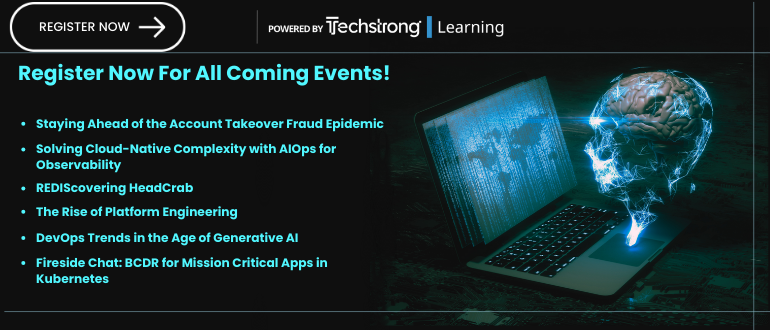
2024-2-6 23:0:0 Author: securityboulevard.com(查看原文) 阅读量:8 收藏
 Joe Ariganello VP of Product Marketing
Joe Ariganello VP of Product Marketing
Joe is the VP of Product Marketing at MixMode. He has led product marketing for multiple cybersecurity companies, with stops at Anomali, FireEye, Neustar and Nextel, as well as various start-ups. Originally from NY, Joe resides outside Washington DC and has a BA from Iona University.
Organizations continue to face increasingly sophisticated cyber threats that require a proactive and adaptive approach to cybersecurity. As the volume and complexity of security data grows, security professionals are turning to advanced AI technologies to enhance their capabilities and stay ahead of emerging threats.

Embracing AI for Enhanced Cyber Defense
Security professionals view AI as a force multiplier, enabling them to analyze vast amounts of security data, identify patterns indicative of potential threats, and respond swiftly to emerging cyber incidents. AI’s ability to detect known and unknown threats with high accuracy and speed has garnered the attention and trust of security teams seeking to bolster their cybersecurity posture. Advanced AI is being utilized for:
Real-Time Threat Detection
One of the primary applications of AI is real-time threat detection. AI-powered solutions can analyze vast amounts of security data, including network traffic, logs, and endpoint activities, to identify patterns and anomalies indicative of potential security threats. By leveraging machine learning algorithms, AI can detect known and unknown threats with high accuracy and speed, enabling SOCs to respond swiftly to emerging cyber threats.
Automated Incident Response
AI is also being utilized to automate incident response processes. Organizations can streamline the containment and mitigation of security incidents by employing AI-driven playbooks and response workflows. Automated incident response can help reduce response times, minimize the impact of security breaches, and free up SOC analysts to focus on more complex tasks, such as threat hunting and proactive security measures.

Behavioral Analytics and User Entity Behavior Analytics (UEBA)
AI-driven behavioral analytics and User Entity Behavior Analytics (UEBA) are crucial in identifying anomalous activities within an organization’s network. By establishing baselines of normal user and system behavior, AI can detect deviations that may indicate insider threats, compromised accounts, or unauthorized access attempts. AI-powered behavioral analytics can provide valuable insights into potential security risks and enable proactive threat mitigation.
Predictive Analytics and Threat Intelligence Integration
AI can be harnessed to forecast potential security threats and vulnerabilities based on historical data, enabling security analysts to take proactive measures to prevent future incidents. Additionally, AI-driven predictive analytics can be integrated with external threat intelligence feeds to enrich security data and provide context around detected threats. By correlating internal security events with external threat intelligence, AI can enhance the SOC’s ability to identify and prioritize critical threats.
Maximizing the Value of AI
While AI has already demonstrated its potential to enhance SOC operations, organizations can maximize the value of AI by adopting the following strategies:
Comprehensive Data Integration and Analysis
To fully leverage the power of AI, SOCs should focus on integrating and analyzing diverse sources of security data, including network logs, endpoint telemetry, threat intelligence feeds, and historical incident data. By consolidating and analyzing this data, AI can provide a holistic view of an organization’s security posture, enabling more accurate threat detection and response.
Continuous Training and Model Refinement
AI models used in SOCs should undergo continuous training and refinement to adapt to evolving threats and changing network environments. By regularly updating and retraining AI models with the latest threat intelligence and historical data, organizations can ensure that their AI-powered security solutions remain effective in detecting and mitigating emerging cyber threats.
Human-Machine Collaboration
While AI can automate routine tasks and augment the capabilities of SOC analysts, human expertise remains essential in interpreting complex security events and making strategic decisions. Organizations should foster a culture of collaboration between AI systems and human analysts, leveraging the strengths to achieve optimal security outcomes.
Ethical and Transparent AI Implementation
Organizations must prioritize ethical and transparent AI implementation as AI becomes increasingly integrated into SOC operations. This includes ensuring that AI models are free from bias, transparent in their decision-making processes, and compliant with relevant privacy and security regulations.
Scalability and Performance
AI solutions deployed in SOCs should be designed to scale and perform effectively in handling large volumes of security data and events. Scalable AI infrastructure and high-performance computing capabilities are essential for enabling real-time threat detection and response at scale.

The MixMode Advantage: Why Advanced AI is Better Suited for Real-Time Threat Detection at Scale
While the adoption of AI in cybersecurity is on the rise, not all AI solutions deliver the same level of effectiveness and reliability. MixMode’s advanced AI stands out for delivering real-time threat detection at scale, offering several key advantages that resonate with security teams:
Self-supervised Learning for Anomaly Detection
MixMode’s AI leverages self-supervised learning to detect anomalies and potential threats within an organization’s network traffic. By autonomously learning the expected behavior of the network, MixMode’s AI can identify deviations that may indicate malicious activities, insider threats, or unauthorized access attempts. This approach resonates with security teams, enabling proactive threat detection without relying on predefined rules or signatures.
Context-Aware Behavioral Analytics
MixMode’s AI is equipped with context-aware behavioral analytics capabilities, enabling it to discern between benign anomalies and genuine security threats. MixMode’s AI can provide security teams with actionable insights by considering the context of network activities and user behaviors, reducing false positives, and enabling more accurate threat prioritization.
Real-Time Threat Detection and Response
MixMode’s AI is designed to deliver real-time threat detection and response, empowering security teams to identify and mitigate emerging cyber threats swiftly. By continuously analyzing network traffic and timestamped data, MixMode’s AI can provide security teams with timely alerts and actionable intelligence, enabling them to defend against evolving cyber threats proactively.
Adaptive and Self-Learning Capabilities
MixMode’s AI is adaptive and self-learning, continuously refining its threat detection capabilities based on evolving network behaviors and emerging threats. This resonates with security teams, as it ensures that the AI effectively detects and mitigates new and sophisticated cyber threats without the need for manual intervention or constant reprogramming.
Scalability and Performance
MixMode’s AI is designed to scale and effectively handle large volumes of security data and events. This scalability ensures that security teams can rely on MixMode’s AI to deliver real-time threat detection at scale, regardless of the size and complexity of their network infrastructure.
As security teams embrace the potential of AI to bolster their cybersecurity defenses, the choice of AI solution becomes paramount. MixMode’s advanced AI is the superior choice for real-time threat detection at scale, offering security teams the confidence and reliability they need to defend against evolving cyber threats.
Other MixMode Articles You Might Like
Todd DeBell of MixMode Recognized as 2024 CRN® Channel Chief
Driving Towards Zero-Days: Hackers Take Turns Uncovering Exploits at Pwn20wn
Augmenting Legacy Controls with AI-driven Threat Detection and Response
Limitations of Legacy Cybersecurity Solutions Against AI-generated Attacks
Cybersecurity Predictions for 2024: What Lies Ahead and How to Defend Against It
如有侵权请联系:admin#unsafe.sh
